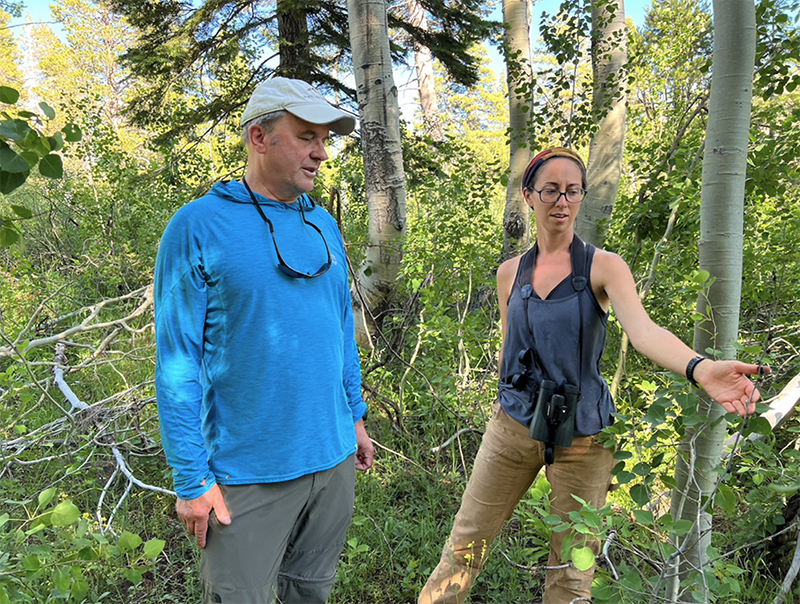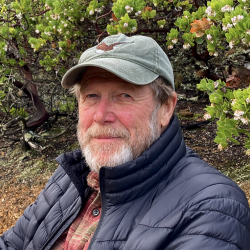GEOG 655: Fire, Water, and Conservation in the Northern Sierra Nevada
Dates: August 4-9, 2024
Instructor: Michael Vasey
Fee: $395 + meals and accommodations fees
Term: Summer 2024
Class Number: 1968 Section Number: 01Z
Course Description
The goal of this class is to introduce students and others to the theory and practice of conservation and rehabilitation of fire-prone Sierra Nevada forests impacted by post-settlement logging, fire-exclusion, fluvial/wetland modification, and other related landscape disturbances. Forest ecology, its relationship to fire, and links with the water-scape will be explored. Land-use history of the North Yuba Watershed from what is known about indigenous tribal cultural management to post-settlement impacts following the Gold Rush will also be reviewed. This review will provide the context in which to appreciate the current threats to the watershed due to the risk of wildfire.
We will then work closely with Ed Smith, Science Lead for the North Yuba Forest Partnership, to understand their approach to addressing this threat through strategic forest thinning and prescribed burns planned for sites in the watershed and near the Field Campus. Issues surrounding monitoring and new state-of-the-art assessment will be presented. The course will ideally contribute to other summer classes that emphasize field methods to assess conservation management.
The workshop will be held at the SNFC and involve lectures, guest lectures, field trips, field design and possibly some field sampling experience. Our intention is to identify particular treatment and control sites that could be used in the future to monitor treatment impacts on vegetation and provide a framework that could possibly be used to monitor mammals, birds, fungi, insects, and other organismal groups as well.


Instructor Bio
The instructor for this course is Dr. Michael Vasey. Mike is now Faculty Emeritus with the Departments of Biology as well as Geography and the Environment at SF State. He has a long history of working with non-profit environmental organizations and taught Conservation Biology for two decades at SF State University. He worked on a national tidal wetland monitoring program for the NOAA National Estuarine Research Reserve Program for the past eight years. Mike has a cabin near the field campus and has taught classes for the SNFC for many years. He has a passion for the North Yuba watershed and its surrounding landscapes. Manzanitas also loom large in his legend!
Course Details
Course Schedule
Class will meet early on Sunday afternoon for a full orientation. A full schedule will be circulated at that time. Once the schedule is set and the student participants are determined, the full draft schedule will be sent to all students by email. For further information, contact mvasey@sfsu.edu.
Supplies List
Students should bring sturdy field shoes, gloves, a hat and sun glasses for protection, a field journal, water bottle, small pack, and personal computer capable of email and internet connections for class time (rather than field).
Lodging and Camping Supplies
Camping gear if you are staying on campus:
- tent and sleeping pad (unless you are staying in our tent with a cot provided)
- warm sleeping bag
- pillow, toiletries, and towel
- flashlight and lantern
- alarm clock
Field gear for everyone:
- day pack
- sunscreen
- insect repellant
- water bottles
- plastic containers for packed lunches
- sense of humor
You might also want to bring:
- camera
- binoculars
- hand lens
- camp chair
Clothing:
The weather in the Sierra Nevada can vary greatly, even in a single day. Be prepared for chilly temperatures at night, even below freezing early in the summer. Rain is a possibility any time, whether forecast or not. Variable weather clothing that can be layered is best: long pants and a long-sleeved shirt, warm sweater and jacket, t-shirt and shorts or skirt, sturdy shoes or hiking boots, sun hat, rain gear, and a warm hat or gloves for cold weather and/or night activities. And, if you come later in the season, bring your swimsuit for afternoon dips in the lakes!